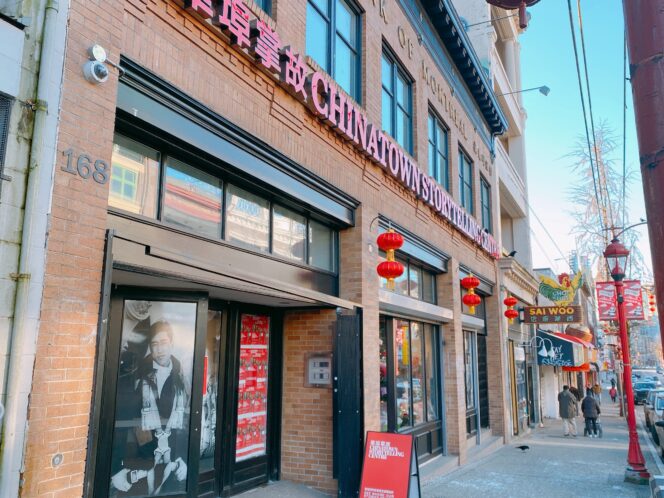
Photo: Tara Lee
For Carol Lee, the new Chinatown Storytelling Centre embodies the narratives of the Chinese Canadians who worked, played, ate, and built strong community ties in the vibrant historical neighbourhood. “Chinatown holds a place in the hearts of so many Vancouverites,” she says. Lee, Chair of the Vancouver Chinatown Foundation, has her own personal connections to the area. Her grandfather opened a dry goods and furnishing store there in 1921, she went to Chinese school in Chinatown as a child, and she and her family celebrated countless family occasions over delicious food at nearby restaurants.
Lee’s own memories connect with those of the greater Chinese Canadian community. “Ours is not a story of huge heroes, but rather a lot of little individual stories that, if you put them together, actually had a very big impact,” Lee says. The Chinatown Storytelling Centre gives these narratives a permanent home for the first time in Canada, making it a huge and proud achievement.
The dream that drove the Chinatown Storytelling Centre first took form in 2011 when Lee co-founded the Vancouver Chinatown Foundation, a registered charity whose vision encompasses “preserving Chinatown’s irreplaceable history,” along with physical and economic revitalization, community building, and promotion of well-being. Since taking over the building at 168 East Pender Street in 2016, the Foundation has been working on launching a space for housing the many narratives of Chinese Canadians.
For Lee, the word “storytelling” was key. “It was really important to me that we call it the Storytelling Centre because I wanted to have something that was very accessible. Chinatown was an immigrant community. In fact, many of the people who came here were probably not even literate,” Lee says. Instead of telling the official recorded history of the nation, the Chinatown Storytelling Centre gives voice to the stories of those who were overlooked and excluded but still contributed to Canada, nonetheless.
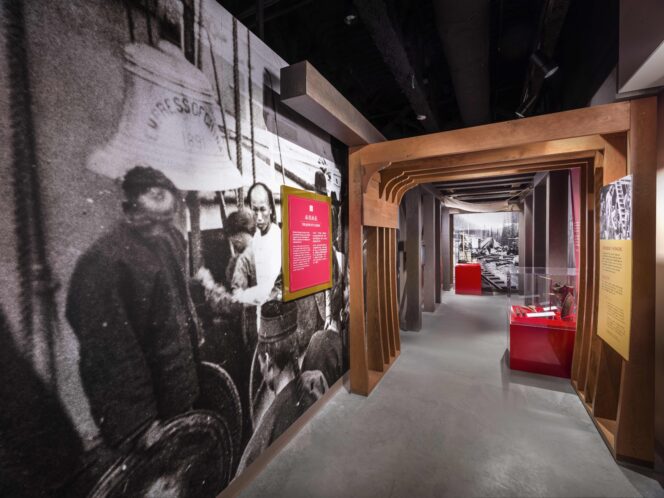
Photo: John Sinal Photography
The Chinatown Storytelling Centre traces the arc of Chinatown and Chinese Canadian history by organizing it according to key compelling themes, starting with “The Journey Begins” with the crossing of the Pacific to “Gum Saan” or “Gold Mountain” and moving through periods such as “Building Canada,” the “Exclusion Act & Stronger Together,” “Fighting for Canada” in World War II, and “The Boom Years” from 1947 to roughly 1990. Historical artifacts, such as gold pans, a CPR water container, and a mahjong set, make concrete the stories that are narrated in text.
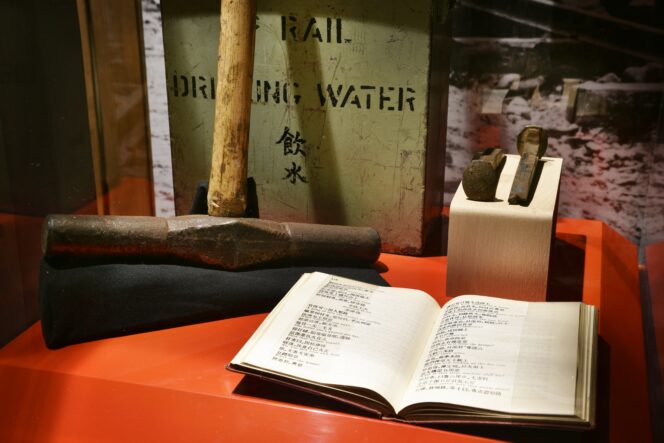
Photo: John Sinal Photography
“We Chinese Canadians have an important history. Our history is part of Canadian history but so few people actually know what that story is. It’s a tremendous contribution,” Lee says. She mentions the invaluable work of Chinese railways workers who sacrificed their lives to complete the most arduous and dangerous western parts of the Canadian Pacific Railway. “It actually changed the course of the country in a fundamental way to being a Pacific and Atlantic-facing country as opposed to just being an Atlantic-facing country,” Lee says. At the photo op of the “last spike” in Craigellachie, British Columbia, in 1885, Chinese workers labourers were deliberately omitted from the photo, effacing their pivotal role in the project.
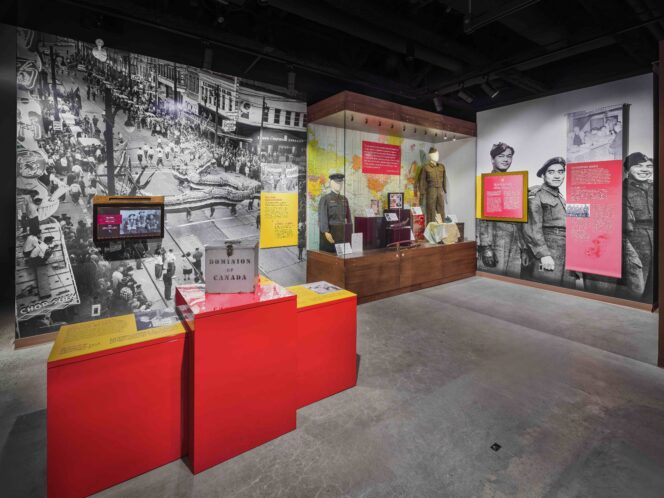
Photo: John Sinal Photography
In contrast, the Chinatown Storytelling Centre recognizes and makes personal the place of Chinese Canadians in Canadian history. Besides showcasing their early contributions, the space addresses the societal, as well as legislated racism against Chinese Canadians, which took the form of a head tax that started at $50 in 1885, increased to $100 in 1900, and reached an exorbitant $500 in 1903. In 1923, the Canadian government passed the Chinese Immigration Act, which basically kept out all Chinese from the country, besides very limited entry for certain groups of people, like diplomats. “We tried to be factual about it; we didn’t want to sugar coat it. It was very challenging times to be Chinese,” Lee says.
Although Lee felt it was important to give an honest account of the harsh treatment of Chinese people in Canada, she emphasizes the resilience and resourcefulness of early immigrants. “It was interesting in how they adapted to form these clan associations and societies. In some ways, they provided mutual support. So, you could go there, and people would help you with jobs. They were micro-lending institutions, and a place for entertainment. It was almost like a little community inside a larger community. It allowed them to navigate, to survive, and in some ways thrive,” Lee says.
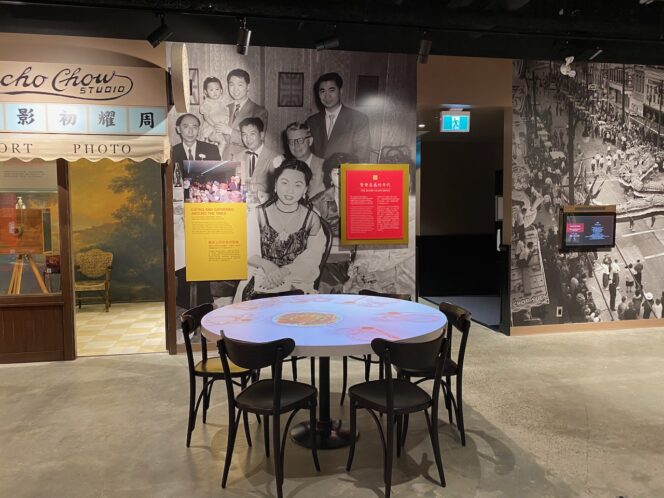
Photo: Tara Lee
The dynamism and relationships within the community really come through at the Chinatown Storytelling Centre. A “Family & Food” section features a round table to symbolize the convivial eating and socializing that took place at restaurants, diners, and cafes throughout Chinatown. Meanwhile, a recreated Yucho Chow Studio features photographs of families posing for Yucho Chow, who opened his first studio in 1906. And artefacts from Cantonese opera performances and dragon dances spotlight artistic and cultural activities.
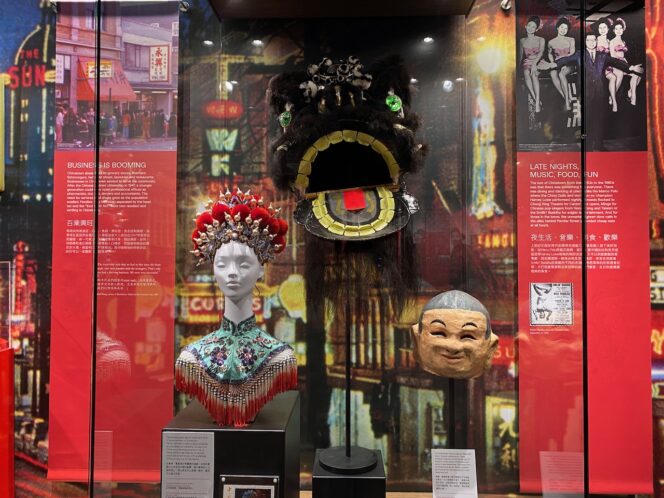
Photo: Tara Lee
“We thought that it was important for the whole experience to be immersive, that there would be different ways of telling the story, as opposed to just making people read,” Lee says. As a result, visitors can pose for vintage photographs and watch informative clips and stories (in English, Cantonese, and Mandarin) at interactive AV kiosks. The Rogers Theatre shows short films, such as one that tells the story of Robert and Tommy Wong, teenage brothers who literally made their dreams soar by building a one-seater airplane in Chinatown from 1935 to 1937. An augmented reality app also allows visitors to experience the neon lights and sounds of iconic nightlife spots in Chinatown, like the Smilin’ Buddha Cabaret.
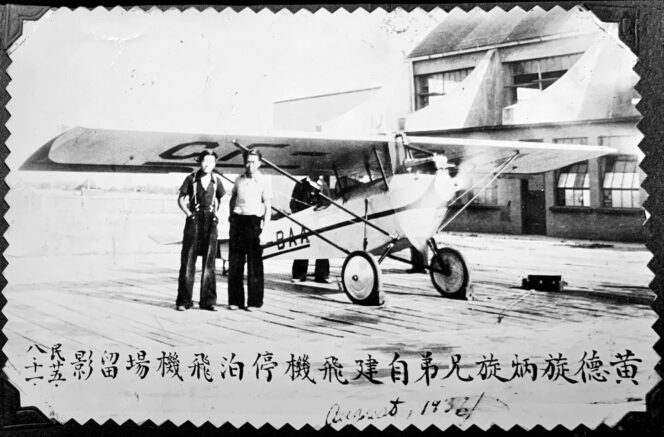
Robert and Tommy Wong with CF BAA August 1936
The journey ends by celebrating the many individual stories that compose the larger fabric of the Chinese Canadian community. Part of the Robert H. N. Ho Living Legacy Project, “Our Stories” collects the narratives of a wide range of individuals, such as Johnson Su-Sing Chow, the poet, calligrapher, scholar, and artist; Vivian Jung, the first Chinese Canadian teacher to work for the Vancouver School Board; and Harvey Lowe, famous for his talent with the yo-yo. “The stories are really the centrepiece. Some of them are the overarching stories of the different chapters but just as important are the individual stories. It’s fun to see how much people like these individual stories and seeing themselves in the history. I love it,” Lee says.
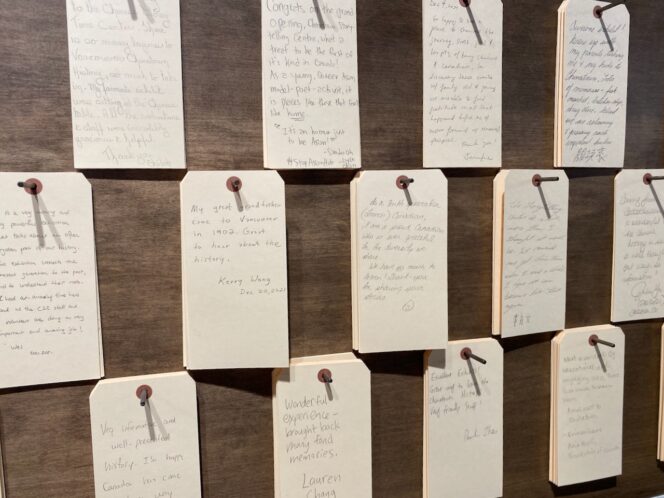
Photo: Tara Lee
As visitors leave, they’re invited to consider “Chinatown, Then & Now.” The Chinese Canadian community has become much more diverse and dispersed since the early days of Chinatown. And while other places, like Richmond, have become commercial centres, Lee says that Chinatown remains “the cultural heart of the Chinese community,” one well worth preserving. “It’s a beautiful part of our city. And I’m glad that people are starting to rediscover it,” Lee says.
In fact, the inspiring stories of Chinese Canadians flourishing in the face of hardship continue to resonate today. “We wanted to open in 2018. But actually, maybe the timing is good. With this rise of anti-Asian racism, it’s come out at a time where greater understanding and education are important,” Lee says. The sharing and heartfelt sense of community that underlie the Chinatown Storytelling Centre are its greatest gifts to any visitor.
















